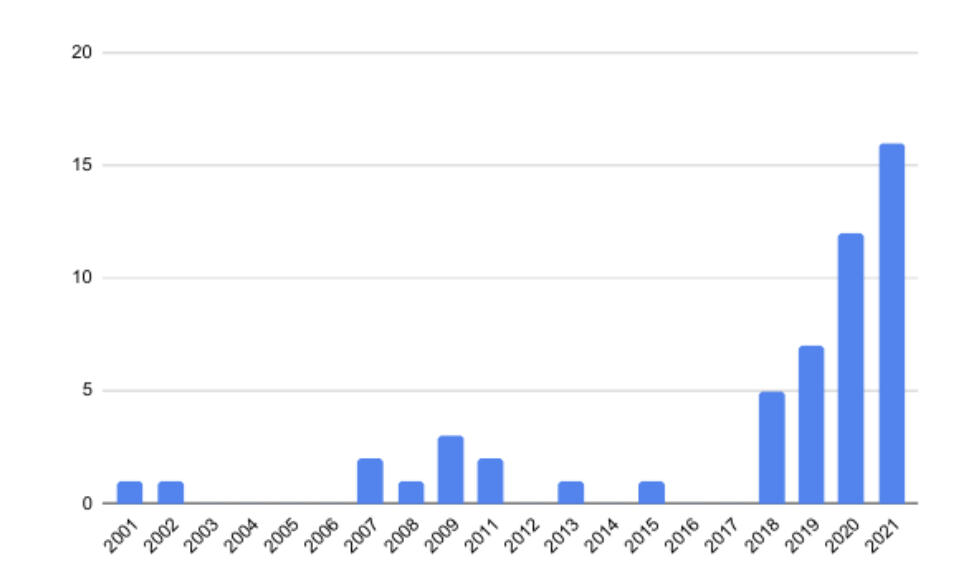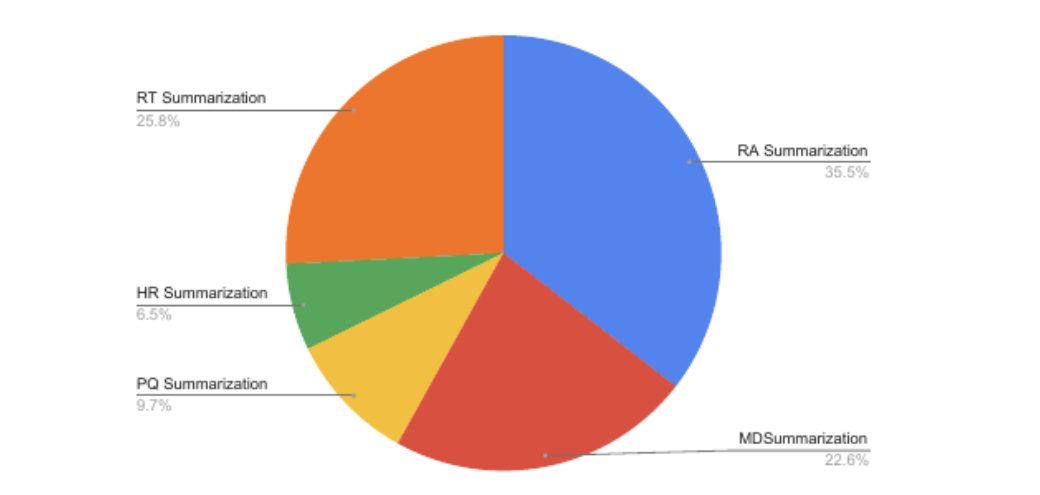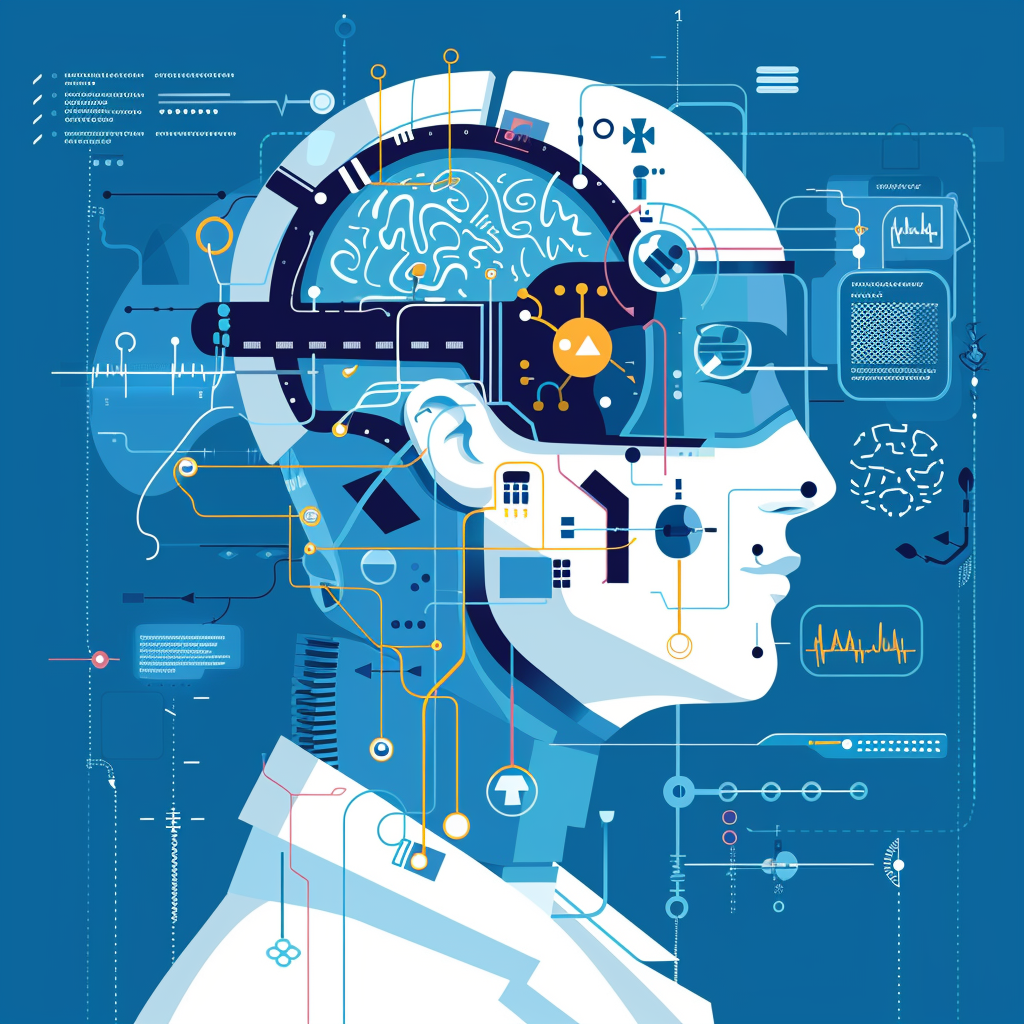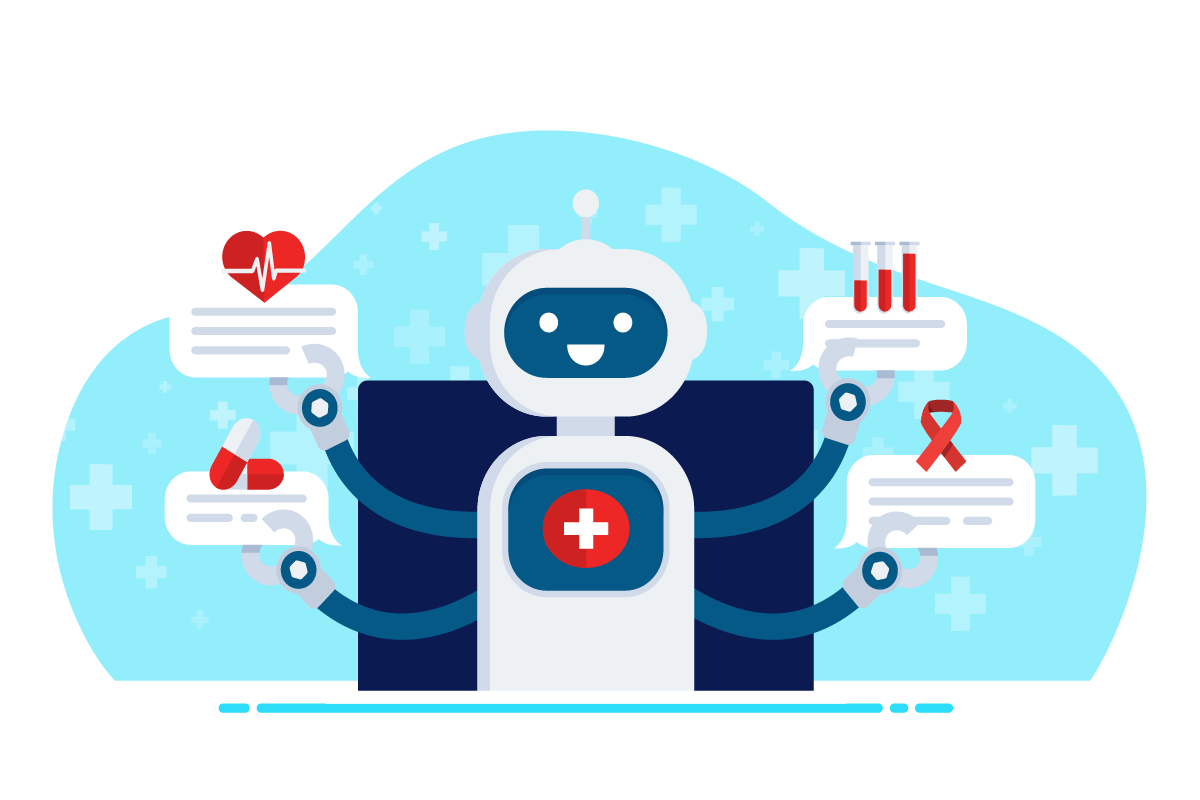In an era driven by information and technology, healthcare is witnessing a digital revolution like never before. One of the most compelling advancements is the use of artificial intelligence (AI) in automating the summarization and analysis of medical records.
This blog post highlights the importance, benefits, and impact of AI medical records summarization and discusses the implementation of NLP techniques and potential future advancements.
The Role of AI in Summarizing Medical Records
Medical records summaries are critical in patient care, legal proceedings, insurance claims, and overall healthcare operations. They condense complex patient information into coherent and concise summaries, providing an overview of key medical events, treatments, surgeries, and other essential data.
Over the past two decades, medical document summarization has been a common practice, but creating such summaries has traditionally been time-consuming and prone to human error.

However, AI and NLP are now revolutionizing this process. AI technologies, powered by machine learning and Natural Language Processing (NLP) techniques, have transformed how medical records are analyzed and summarized.
Through advanced data processing and optical character recognition, AI algorithms can extract critical information from vast amounts of unstructured medical data, making the medical records summary creation process faster, more accurate, and more efficient. This not only saves valuable time but also enhances the accessibility and usability of medical records, benefiting patients, healthcare providers, and other stakeholders.
Components of Medical Records
Medical records reviews consist of key components that together give a thorough understanding of a patient’s health history. These elements interconnect to create a detailed tapestry, revealing the nuanced specifics of an individual’s medical journey. Let’s take a closer look at each element.
Patient demographics
At the core of any medical record lies the foundation of personalized care–patient demographics. These include fundamental details such as the patient’s name, age, gender, and contact information. While seemingly basic, this information forms the bedrock upon which a patient’s medical history is built. It serves as the starting point for healthcare professionals to tailor their approach, ensuring that every aspect of care aligns with the individual’s unique characteristics.
Medical history
A detailed account of the patient’s medical history is akin to turning the pages of a book that narrates the story of their health. It delves into past illnesses, surgeries, and medical conditions, providing crucial context for current health issues. Understanding the historical nuances of a patient’s health journey empowers healthcare providers to make informed decisions, anticipate potential challenges, and tailor interventions accordingly.
Clinical observations
Notes on physical examinations, vital signs, and clinician observations constitute a visual and tactile exploration of a patient’s current state. These observations go beyond numerical data, capturing the subtleties of a patient’s physical condition. They form a bridge between objective measurements and the nuanced art of clinical assessment, allowing healthcare professionals to paint a more vivid picture of the patient’s health status.
Diagnoses and treatments
The heart of medical records lies in documenting diagnosed conditions and the corresponding treatment plans. This serves as a compass, guiding healthcare professionals through the intricate landscape of a patient’s health challenges. It outlines the path forward, detailing the strategies and interventions designed to address specific health issues and improve overall well-being.
Medication records
Details about prescribed medications, dosages, and administration instructions compose a symphony of pharmacotherapy within medical records. This section not only records the medications prescribed but also provides insights into the ongoing management of the patient’s health. It is a dynamic element that reflects the adaptability of healthcare strategies based on the patient’s response to treatment.
Laboratory and imaging results
Test results, X-rays, MRIs, and other diagnostic imaging findings reveal the invisible aspects of a patient’s health. These objective measures contribute to a more comprehensive understanding of the physiological and anatomical aspects of the patient’s condition. Integrating these results into medical records enhances diagnostic precision and aids in monitoring the effectiveness of treatments.
Progress notes
Clinician notes documenting the patient’s progress during treatment serve as a continuous narrative, capturing the evolving story of a patient’s health. These notes provide valuable insights into the effectiveness of interventions, allowing for real-time adjustments to the treatment plan. The dynamic nature of progress reports ensures that healthcare professionals are attuned to the ongoing narrative of a patient’s journey toward recovery.
Consent forms
In the realm of ethical healthcare practices, consent forms are crucial components of medical records. These documents record the patient’s agreement to specific treatments or procedures, ensuring transparency and respect for individual autonomy. The inclusion of consent forms upholds the principles of informed consent, fostering a relationship built on trust and collaboration between healthcare providers and patients.
Based on the results of the study, we can create a graph of the different subtasks of summarizing medical documents.

Knowing about the building blocks of medical data helps us understand how complicated and rich the information they hold is. Adding new technologies, like AI, to these records is meant to get the most out of them, making processes more efficient and improving patient care.
Key Issues Of Summarizing Medical Documents
Summarizing medical documents is a critical task with its own set of challenges that have far-reaching implications for healthcare professionals, researchers, and patients alike. Here are some of the most pressing issues associated with AI medical documentation summarizations:
- Precision in terminology. Medical documents are laden with highly specialized terminology. Ensuring precise translation of this terminology in a medical record summary is challenging, as inaccuracies can lead to misinterpretation. Misinterpreting medical terms in summaries can result in errors in clinical decision-making, potentially affecting patient outcomes.
- Risk of information loss. Condensing extensive medical documents into succinct summaries risks omitting crucial details, leading to a loss of context and nuance. If critical information is missed, it can compromise the accuracy of medical decision-making and the implementation of treatment plans.
- Data privacy and confidentiality. Medical documents often contain sensitive patient information. Summarization processes must adhere to strict privacy and confidentiality standards to prevent unauthorized access. Violations of patient privacy can lead to legal consequences, eroding trust in healthcare systems and hindering the adoption of technology in the medical field.
- Integration of multimodal data. Medical information is not limited to text – it includes images, charts, and numerical data. Integrating and summarizing multimodal data poses a significant technical challenge. Failure to incorporate all relevant data types may result in incomplete summaries, hindering comprehensive understanding and decision-making.
- Dynamic nature of medical knowledge. Medical knowledge is continually evolving with new research findings and updated guidelines. Summarizing documents in real time to reflect the latest information is a formidable task. Outdated information in medical record summaries can lead to suboptimal patient care, as healthcare professionals may not be aware of the latest evidence-based practices.
- Cross-disciplinary collaboration. Medical research often involves collaboration across diverse disciplines. Summarizing information from various fields requires a nuanced understanding of each discipline. Inadequate representation of interdisciplinary perspectives may hinder the development of holistic treatment plans and research insights.
- Validation and accuracy. Ensuring the accuracy of summarized medical information is a constant challenge, especially when relying on automated algorithms for summarization. Inaccurate summaries can lead to incorrect clinical decisions, potentially causing harm to patients and eroding trust in automated systems.
Addressing these critical issues requires a multifaceted approach involving the development of advanced natural language processing algorithms, robust data security measures, and ongoing collaboration between healthcare professionals and technology experts. As the healthcare landscape continues to evolve, finding solutions to these challenges is essential for the responsible and effective use of summarized medical information.
How AI Works in Medical Records Summarization
The healthcare industry has been using AI for some time for tasks like adverse event prediction and optimizing operating room scheduling. Still, the sector has $1 trillion worth of untapped improvement potential, and AI is a significant new instrument that can help unlock some of it.
AI-driven medical records summarization is a technological breakthrough that leverages the capabilities of artificial intelligence and natural language processing (NLP) to automate the extraction and summarization of relevant information from medical records. This innovative approach aims to enhance the efficiency of medical record review and analysis while ensuring accuracy and completeness.
- Optical character recognition (OCR). AI systems use OCR technology to convert scanned or handwritten medical records into machine-readable text, overcoming the limitations of traditional document formats.
- NLP algorithms. Natural language processing algorithms enable AI systems to understand the context, relationships, and nuances within medical records. These algorithms analyze the language used in medical documents, extracting key information and identifying relevant patterns.
- Generative AI. Generative AI, such as GPT-4, allows for creating human-like summaries by generating coherent and contextually relevant text. This goes beyond simple keyword extraction, ensuring a nuanced understanding of the content.
- Chronological medical record indexing. AI systems can automatically create a chronological index of events and treatments, providing a clear timeline of a patient’s medical history. This feature is particularly valuable for legal professionals and clinicians seeking a concise overview.
Benefits of AI Medical Records Summarization
AI-powered medical records summarization offers a multitude of advantages. From enhancing efficiency in information retrieval to improving clinical decision-making, the positive impacts are diverse. Here are some primary benefits.
Time efficiency
AI accelerates reviewing medical records, reducing the time required for information extraction and analysis. This enables healthcare professionals and legal experts to focus on critical decision-making rather than administrative tasks. According to a study, using AI-optimized records to answer clinical queries resulted in a 2.3-minute time savings (18% of usual review time) compared to not using AI optimization while maintaining equivalent accuracy.
Accuracy and consistency
AI systems are designed to extract information with high accuracy and consistency. This minimizes the risk of human errors, ensuring that critical details are not overlooked during the review process. Unlike human reviewers, who may be susceptible to fatigue or oversight, AI algorithms tirelessly adhere to predefined criteria, systematically processing and interpreting vast amounts of data. This rigorous and standardized approach enhances the reliability of information extraction, contributing to a more precise and consistent representation of AI medical records.
Enhanced decision-making
Clinicians can make more informed decisions about patient care when armed with concise and relevant summaries of medical records. This is particularly crucial in emergencies where quick and accurate decisions are imperative. In such situations, having a condensed and precise overview of a patient’s medical history can expedite decision-making, enabling healthcare professionals to promptly administer the most appropriate treatments and improve overall patient outcomes.
Legal case preparation
In the legal domain, AI-powered medical records summarization streamlines the preparation of cases, providing attorneys with a comprehensive and well-organized overview of medical information. This can be instrumental in building stronger legal arguments. By leveraging AI for medical records, attorneys can efficiently extract pertinent details, identify patterns, and present a more compelling narrative in legal proceedings.
Cost savings
The automation of medical records summarization can lead to significant cost savings in terms of time and resources. This is particularly important in the healthcare industry, where efficiency improvements contribute to overall cost reduction. By reducing the time and resources traditionally required for manual summarization, healthcare providers can allocate their budget more strategically. This increases investment in cutting-edge technologies, staff training, and patient-focused initiatives, ultimately fostering a more financially sustainable and progressive healthcare ecosystem.
AI Electronic Medical Records (EMR) Adoption
The integration of AI in electronic health records (EHR) systems has gained momentum, with healthcare providers recognizing the potential to enhance the functionality of EMR platforms.
The artificial intelligence electronic medical records market is poised for significant growth over the next five years. What factors contribute to this surge in popularity?

The fact is that AI-powered summarization aligns with the broader goal of optimizing data processing and improving the overall quality of patient care. This includes:
- Improved data processing. AI algorithms streamline the processing of vast amounts of patient data, ensuring that relevant information is readily available for clinicians and healthcare professionals.
- Enhanced decision support. AI-driven EMR systems offer intelligent decision support tools that assist clinicians in diagnosing conditions, recommending treatments, and predicting patient outcomes based on historical data.
- Mobile applications and accessibility. AI in EMR facilitates the development of mobile applications that enable healthcare providers to access patient information securely from any location. This enhances the flexibility and responsiveness of healthcare delivery.
The Future of AI in Medical Records Summarization
As technology continues to evolve, the future holds promising advancements in the field of AI-driven medical records summarization. Key areas of development include:
- Chatbot integration. The integration of AI-driven chatbots for medical records queries can enhance the accessibility of information for both clinicians and patients. This can streamline communication and facilitate quick retrieval of specific medical details.
- GPT-4 and generative AI evolution. The evolution of generative AI models, such as GPT-4, will further refine the ability to generate coherent and contextually accurate medical record summaries. This could lead to a more nuanced understanding and improved summarization quality.
- Interoperability. Efforts to enhance the interoperability of AI systems with various EMR platforms will be crucial. This will ensure seamless integration into existing healthcare infrastructure and facilitate widespread adoption.
- Continuous learning. AI systems will continue to learn from vast datasets, refining their summarization capabilities over time. This iterative learning process will contribute to ongoing improvements in accuracy and relevance.
Final Thoughts
AI-powered medical records summarization represents a transformative leap in the way healthcare professionals and legal entities handle the vast amounts of information in medical records. By automating the summarization process, AI saves time and resources and enhances the accuracy and accessibility of critical medical information.
As we move forward, striking a balance between the benefits of AI-driven summarization and addressing legal and ethical considerations will be crucial. The collaborative efforts of healthcare providers, technology developers, legal professionals, and policymakers will play a vital role in shaping a future where AI contributes to more efficient, accurate, and secure medical records management.
In this dynamic landscape, the fusion of artificial intelligence and medical records holds the promise of a healthcare system that is not only technologically advanced but also more patient-centric and resilient.





